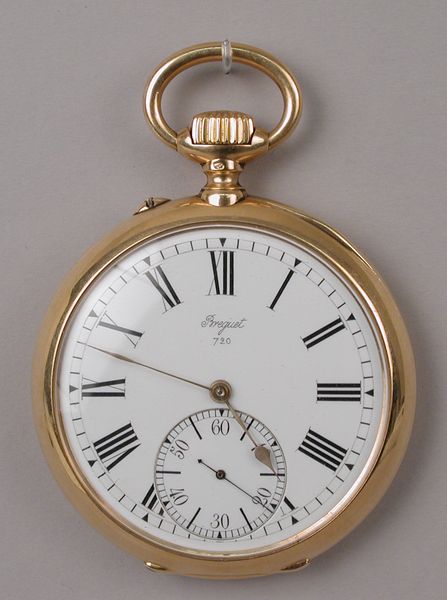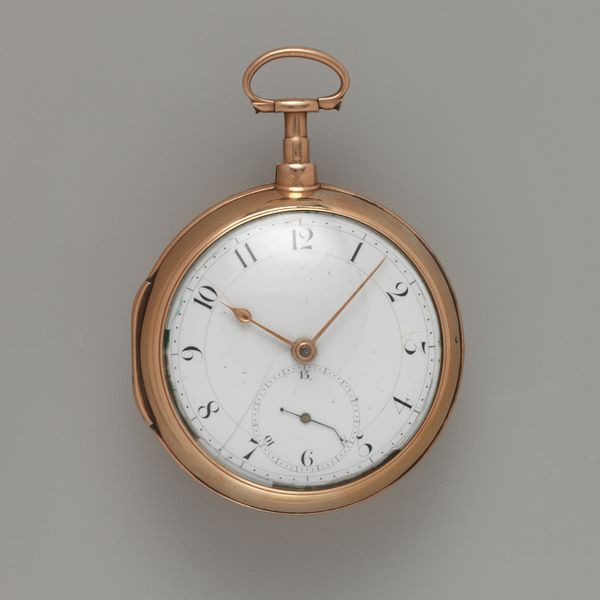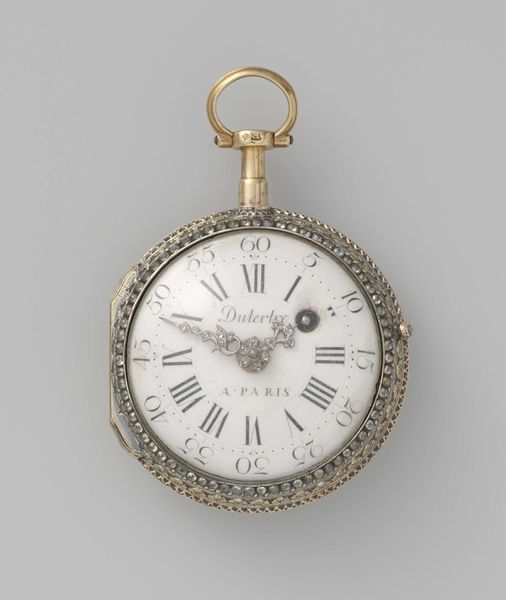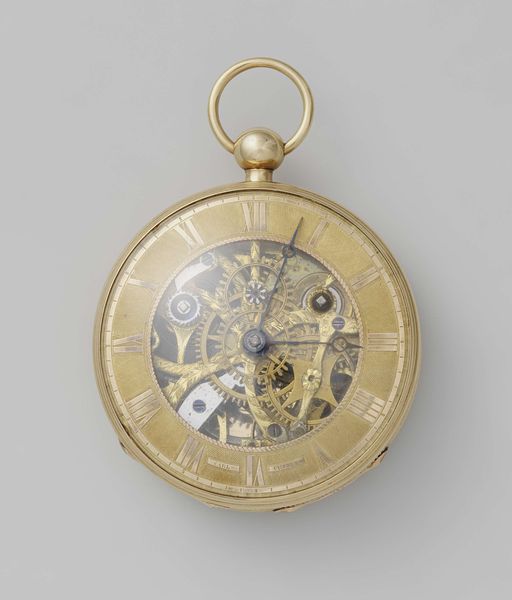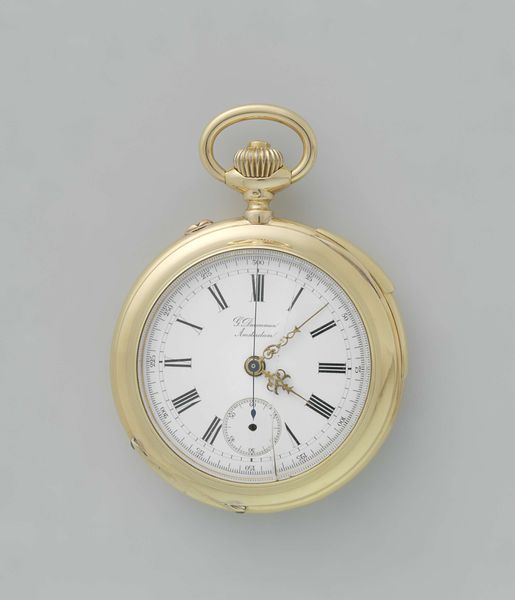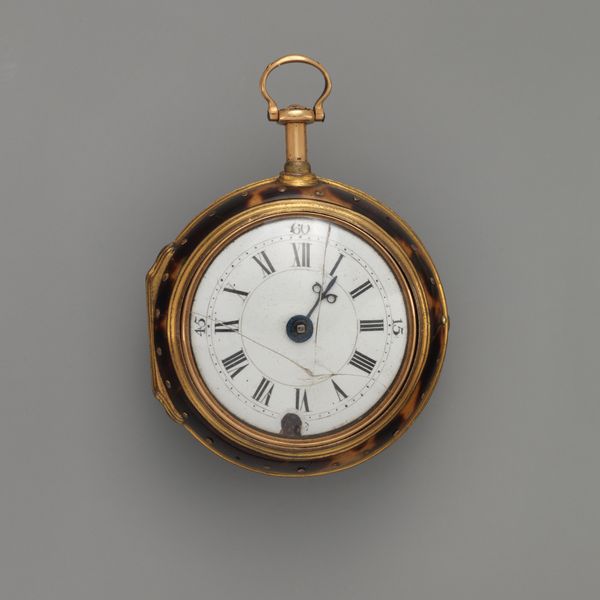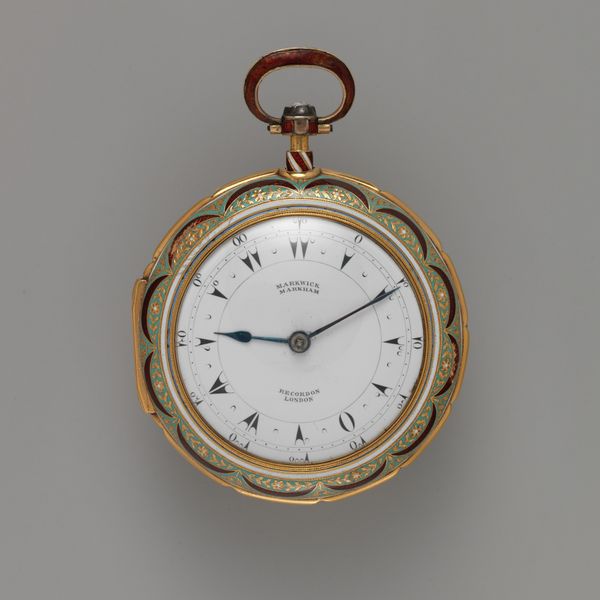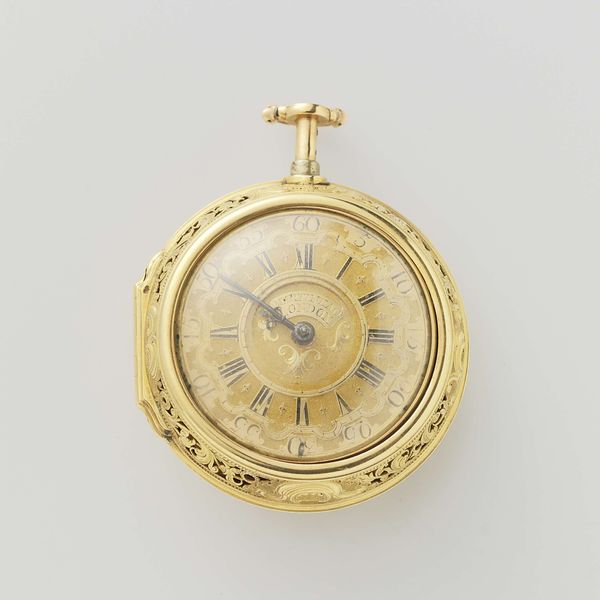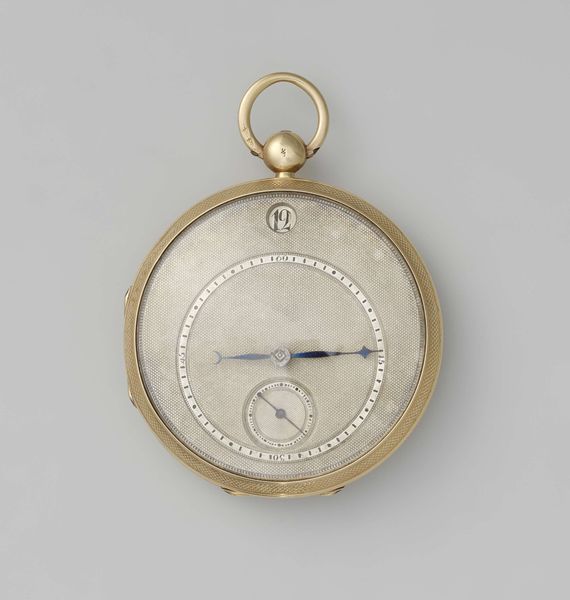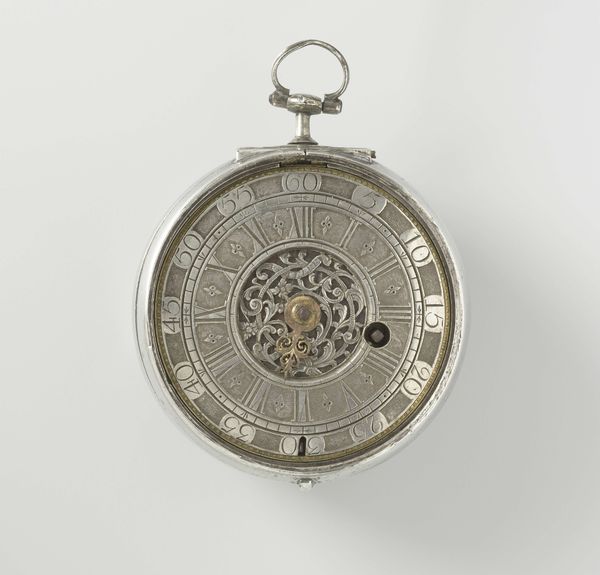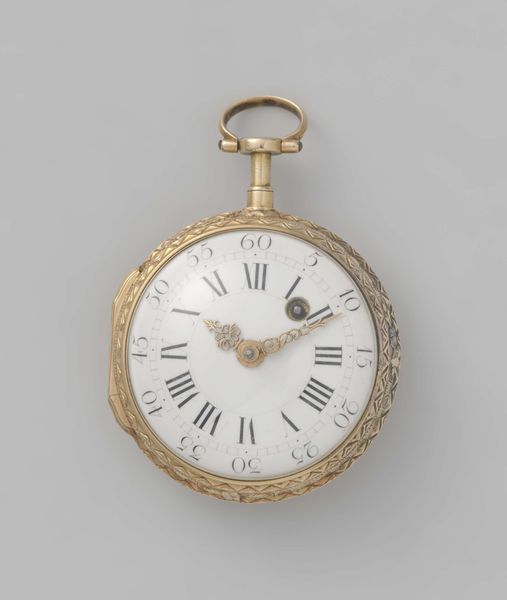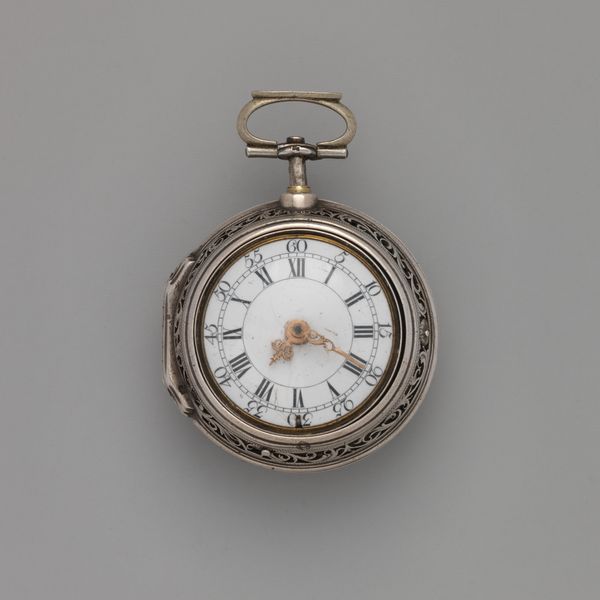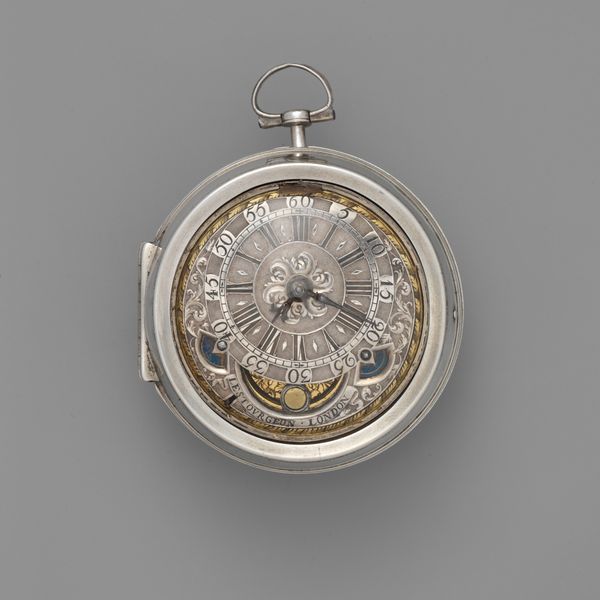
metal, sculpture
#
metal
#
sculpture
#
historical fashion
#
jewelry
#
sculpture
#
jewelry
#
decorative-art
Dimensions: Diameter: 2 1/4 in. (5.7 cm)
Copyright: Public Domain
Curator: Here we have a pocket watch crafted by Breguet, dating from somewhere between 1805 and 1815. The case is metal, and the open face invites you to see its intricate inner workings. Editor: The gears remind me of a delicate nervous system laid bare. It feels unsettling to see the cogs of time exposed so vulnerably, this little dance of decay. Curator: It speaks to an era deeply concerned with precision, yet utterly fascinated with revealing its mechanisms. Consider the context of early 19th century Europe. Think about the burgeoning Industrial Revolution, and how ideas about labour and technology became associated with status. To possess such a complex timepiece signified having access to both capital and an elevated degree of social power. Editor: I see echoes of ancient astronomical clocks—the zodiac symbols replaced by Roman numerals. The golden components almost resemble alchemical symbols. Does Breguet invoke cultural memory of time's passage? Or does he merely reflect the latest technologies in watchmaking? Curator: Both. The exposed mechanisms don't just demonstrate ingenuity, they propose a certain transparency of operation, as if the wealthy who carried these had nothing to hide. It almost makes me suspicious. It feels very performative. Editor: Maybe it's intended to reflect something fundamental about our mortality. The whirring gears whisper, “Remember, you too will break down." The opulence distracts, but there's something stark about this exposure, regardless. Curator: I see your point, but this exposure may also be an early form of corporate signaling, designed to convey confidence in the quality and precision of Breguet's workshops, signaling access to power structures for select wearers within very strict cultural hierarchies. Editor: And perhaps even beyond signaling. I find it impossible not to read the deep historical echoes in that gilded face. It isn't simply jewelry or high tech. The very idea of regulated, visible time became, itself, another cultural artifact on par with religious symbolism. Curator: Indeed. And by understanding those tensions— between personal vanity and expanding systems of control— we begin to unravel what objects like this watch really meant, and continue to mean, in shaping how we experience time, today. Editor: I'll look at my smart phone differently from now on... Thank you.
Comments
No comments
Be the first to comment and join the conversation on the ultimate creative platform.
